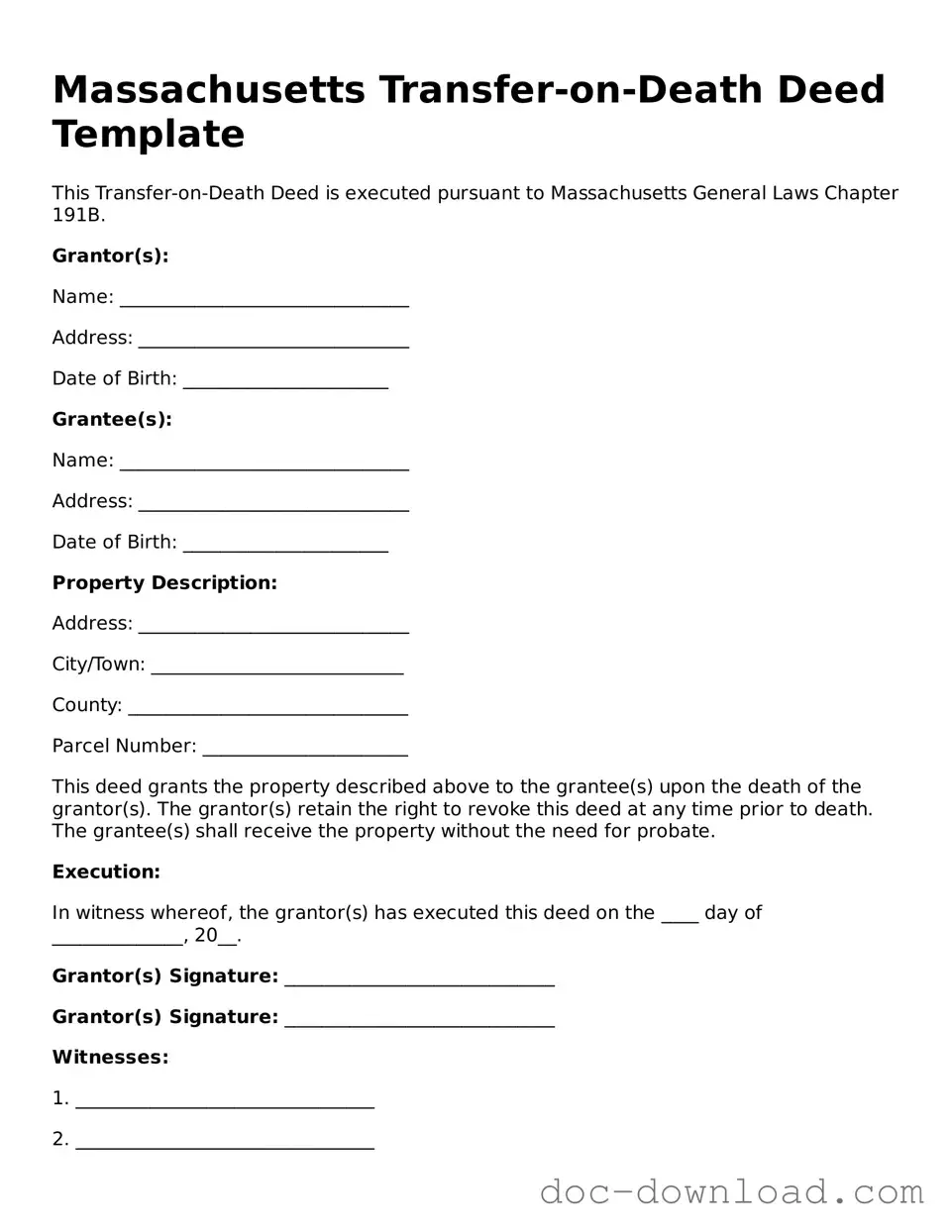Massachusetts Transfer-on-Death Deed Template
This Transfer-on-Death Deed is executed pursuant to Massachusetts General Laws Chapter 191B.
Grantor(s):
Name: _______________________________
Address: _____________________________
Date of Birth: ______________________
Grantee(s):
Name: _______________________________
Address: _____________________________
Date of Birth: ______________________
Property Description:
Address: _____________________________
City/Town: ___________________________
County: ______________________________
Parcel Number: ______________________
This deed grants the property described above to the grantee(s) upon the death of the grantor(s). The grantor(s) retain the right to revoke this deed at any time prior to death. The grantee(s) shall receive the property without the need for probate.
Execution:
In witness whereof, the grantor(s) has executed this deed on the ____ day of ______________, 20__.
Grantor(s) Signature: _____________________________
Grantor(s) Signature: _____________________________
Witnesses:
1. ________________________________
2. ________________________________
Notarization:
State of Massachusetts, County of ________________
On this ____ day of ______________, 20__, before me, a Notary Public, personally appeared _______________________________ and proved to me through satisfactory evidence of identification to be the person whose name is signed on the preceding or attached document, and acknowledged to me that he/she signed it voluntarily for its stated purpose.
Notary Public Signature: ________________________________
My Commission Expires: _______________________________
